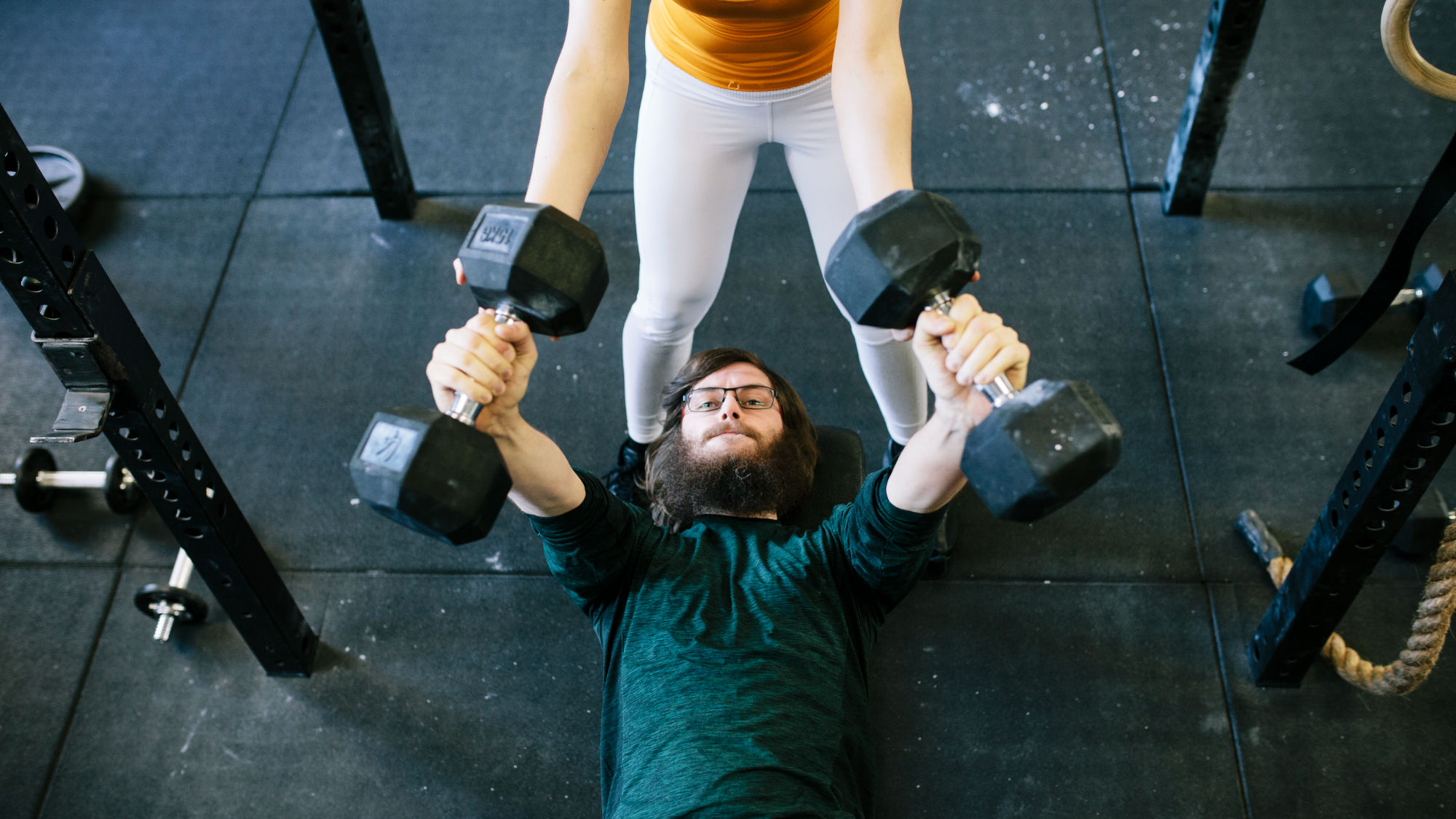How to lift weights properly to build muscle and perfect your form
We asked an expert how to lift weights to help you develop strength and confidence during your workouts


Stepping up to a weights rack, a selection of dumbbells, or even just setting foot in a gym for the first time can feel overwhelming. Fortunately, learning how to lift weights can help you feel confident while working out and achieve your fitness goals more effectively.
Although some moves look straightforward, you still need to consider which weights to use, how heavy to lift, and learn the proper technique. And that's true whether you want to use a kettlebell to boost your metabolism or lift dumbbells to build a stronger upper body.
To help you learn how to lift weights properly, we spoke to Chris Gagliardi, a personal trainer certified by the American Council on Exercise (ACE). Gagliardi explained where to start, how often you should weight train, and how to become confident lifting weights to help you build strength and feel good.
Chris Gagliardi is a personal trainer certified by the American Council on Exercise (ACE), NSCA-certified strength and conditioning specialist, and a group fitness instructor. He obtained a degree in kinesiology from San Diego State University and was awarded a Master's degree in kinesiology from A.T. Still University.
1. Make a plan you can stick to
When you look up advice or workout plans online, most jump straight in with a complex routine or suggest doing a muscle-building workout several times a week, which can be a challenging way to train.
If you're just starting, you don't want to burn out, accidentally hurt yourself, or lose motivation after training too hard. So, creating a realistic plan that'll challenge you but not overdo it is crucial.
As Gagliardi explains: "When it comes to deciding which training method might be best for you, it is important to consider what your goals are, what seems fun, and how much time you have available to focus on weightlifting each week."
But how often should you lift weights? Although you could take on a 30-minute dumbbell workout every day, if you're new to strength training, this will cause a lot of stress on your body and make it hard to recover.
Start your week with achievable workout ideas, health tips and wellbeing advice in your inbox.
So the amount of resistance training you do each week will depend on your goals. Still, in the Physical Activity Guidelines for Americans, adults should target each major muscle group (legs, hips, back, abdomen, chest, shoulders, and arms) at least twice a week.
2. Focus on the five basic movements
According to Gagliardi, the first part of learning how to lift weights involves mastering five primary movements that you'll need for most strength training exercises.
So before picking up a weight, try performing these movements with just your body weight. "Once these movement patterns can be performed with bodyweight, then you can focus on loading them with weight gradually," Gagliardi says.
3. Perfect your form
Once you've mastered the primary movements, it's time to perfect your form. How you do each exercise, from your starting posture to how slowly you move the weights, can affect the results.
The technique for each move will differ, but there are some general principles to keep in mind. For instance, you want to start with a good upright posture, with your back straight.
It's also important to engage your core muscles — a section of mid-body muscle that connects your upper and lower body — rather than allowing your back to arch to support you in planks or dumbbell presses.
"The use of mirrors to watch your form can be beneficial," Gagliardi says. "Understanding what each exercise is targeting to ensure you are feeling it in the proper area is also helpful."
He also notes that "working with an exercise professional can also be helpful." However, if your budget doesn't extend to a private session, we've worked with trainers to develop guides on how to deadlift with dumbbells, how to do kettlebell swings, and how to do a dumbbell row.
4. Increase your repetitions, then your weights
Some people question whether you should lift heavy or light weights, but the best place to start is by looking at weight vs repetitions instead. This is because it's hard to work out exactly when to increase the load.
It's easy to get hung up on the weight itself, but the most critical decision is to find a load that'll challenge your muscles but won't affect your form. This is why Gagliardi recommends a specific training technique.
"If your training goal is to do an exercise for 8-15 repetitions, you would first select a weight that allows you to complete your set within this range," he explains.
"If you can only lift the weight five times, then it is too heavy, and a lighter weight should be used. If the starting weight can be lifted 20 times, then it is too light, and the weight should be increased.
"Now, let's say the initial weight you select allows you to perform 8 repetitions of an exercise but not nine. Perfect." As you develop strength, you can lift this weight for more repetitions, say, up to 15 reps.
This is when Gagliardi recommends you start using the progressive overload technique to gradually increase the weight as you get stronger. "First, you increase the repetitions, and then you increase the load," he adds.
5. Take time to recover
While you might catch the weightlifting bug, be careful not to overdo it. "A minimum of 48 hours of recovery should be taken between training sessions for the same muscle groups or body parts," Gagliardi tells us.
This is because resistance training with weights causes tiny tears in your muscle fibers, which take time to heal. As your body repairs these fibers, it strengthens and grows the muscles.
This process is why you may feel post-workout pain, known as delayed-onset muscle soreness (DOMS). You can ease this by massaging yourself with a foam roller, but getting enough protein is also vital.
If you're wondering how much protein you should eat, Gagliardi says, "the goal is to consume enough nutrients to help build, repair, and preserve lean tissue." The recommended allowance is 0.8g of protein per kilogram of body weight per day.
However, what your body needs will vary and also depends on how you exercise and your goals. Although you can get protein from your diet, it's worth making a post-workout shake with one of the best protein powders for weight loss if you want to stay topped up.
6. Make it a routine
Weightlifting comes with a myriad of benefits. "It can positively influence virtually every system of the body and provides widespread benefits, ranging from increased skeletal muscle strength and mass to improved bone mineral density and blood glucose regulation," Gagliardi tells us.
Despite the common perception that weights are for bodybuilders and advanced exercisers, using weights to strengthen your muscles can help improve your mobility and allow you to stay active throughout your life.
But in the middle of a tough session, staying focused on these long-term benefits can be tricky. That's why it's essential to build resilience, sometimes known as mental strength. And fortunately, you don't need any equipment to get started.
It's a bit like learning how to meditate, but taking on a 10-minute mental strength routine helps develop resilience, reduces stress, and helps create a connection between your body and mind, which is essential for perfecting your weightlifting form.
Becks is a freelance journalist and writer with more than 7 years of experience in the field. She writes health and lifestyle content for a range of titles including Live Science, Top Ten Reviews, Tom’s Guide, Stylist, The Independent, and more. She also ghostwrites for a number of Physiotherapists and Osteopaths.
Health has been a big part of Becks’ lifestyle since time began. When she’s not writing about the topic of health, she’s in the gym learning new compound exercises. And when she’s not in the gym, she’s most probably reading.
